Potpićan is a small inland town in the Croatian part of Istria, the largest peninsula in the Adriatic that is 90% located in Croatia and 10% in Slovenia. That’s about all I can tell you about Potpićan and to be honest, it would never have got on our radar had it not been for a tip from a reader with Croatian connections, who informed us there was an abandoned coal separation mine there that we might be interested in visiting.
This was in the autumn of 2019 and although we couldn’t find any photos on the Web to indicate what it looked like, we decided to give it a punt. On the same day, we also had a look around Labin, which is 16km south of Potpićan.
We didn’t have a particularly nice time in Labin, which we visited first. The town is renowned for its attractive old town, labyrinth of cobbled alleys, pastel-coloured houses and general quaintness. Contrary to the impression we, well I, might sometimes give we do actually enjoy discovering picturesque locations every now and then and we were looking forward to having a quick shufti around Labin’s medieval streets before (hopefully (*) moving on to the stark contrast of an abandoned location.
(*) You never know if you are going to be able to enter an abandoned location or not until you get there, especially one you can find zero information about.
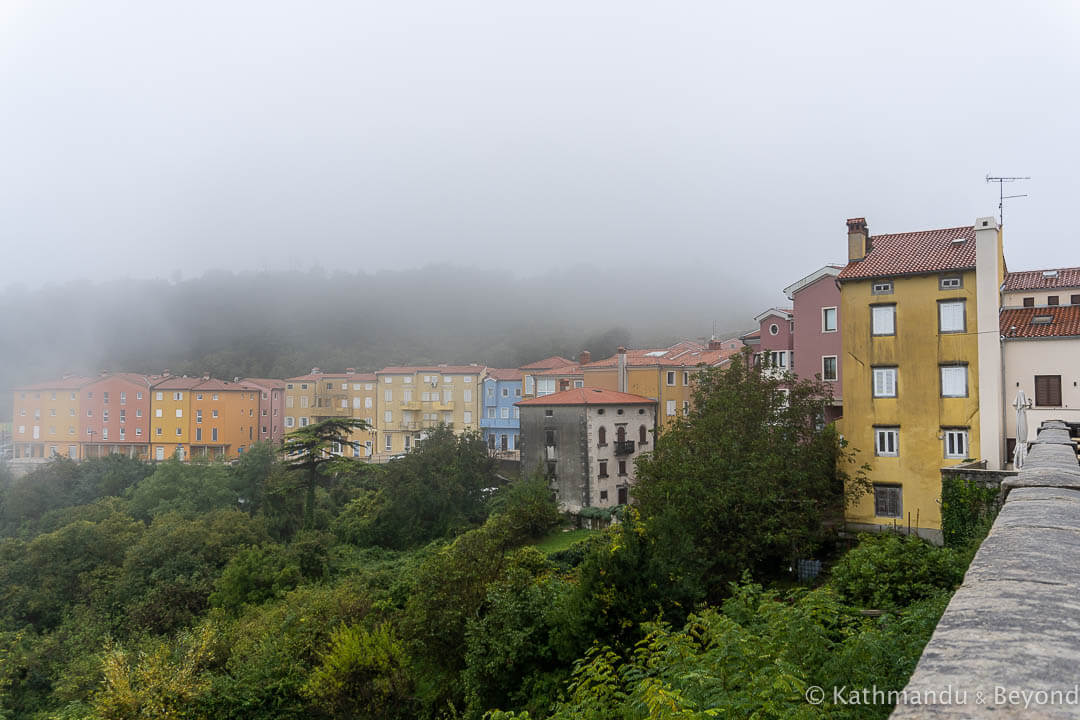
From the point of the view of the weather, the day, in general, hadn’t been an especially pleasant one but, by the time we arrived in Labin in the early afternoon it was positively pissing down. The streets in the lower modern part of town were semi flooded and an umbrella would have been as much use as a chocolate teapot. So, we had little option but to sit in the car and hope that the rain would stop. It didn’t, but after about 45 minutes, it had eased off enough that we could at least do a circuit of the old town and take a few photos, although it certainly didn’t look its best.
On the way out of Labin, we spotted a rather harsh-looking sculpture on the edge of the new town. It was raining heavily again by this point but the monument was crying out to be photographed so we parked as close as we could, tried to protect the camera as much as possible by using an umbrella (while getting wet ourselves), took a few shots and then legged it back to the car before continuing to Potpićan. The monument’s relevance and probable connection to where we were heading in Potpićan would only become clear to us a few days later when we had the opportunity to sort through and label our recently taken photos.
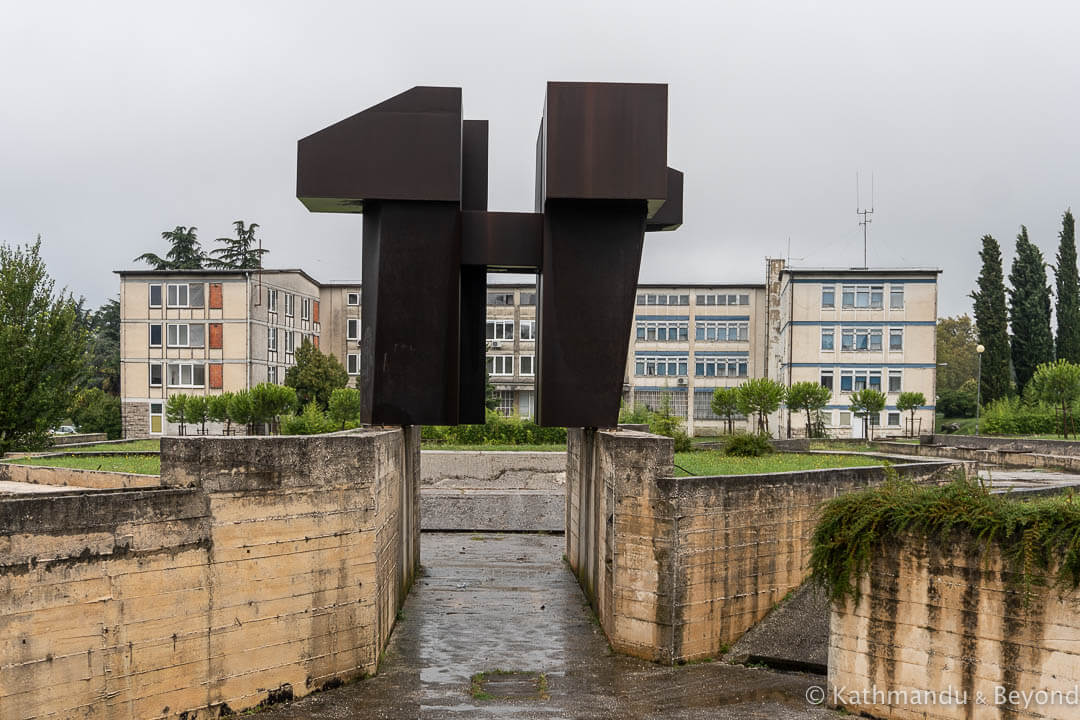
It had stopped raining completely by the time we reached Potpićan, which was good news for us because exploring abandoned locations in the rain isn’t the ideal scenario. We didn’t have an exact location for what we were looking for and in fact, we didn’t actually know what we were looking for but, what we had been told was that the building still had a large ‘Tito’ sign on its roof and given that the town wasn’t especially big, it didn’t require a great deal of time, or detective work, to track it down.
The ‘Tito’ sign could only be seen from the back side of the building, so we stopped to take a look at that before moving to the front of the structure. We parked in what appeared to be a makeshift parking lot for large trucks. In fact, all the while we were in the vicinity we saw big lorries driving past, although we couldn’t work out where the majority of them were going as not many of them were stopping in the car park.
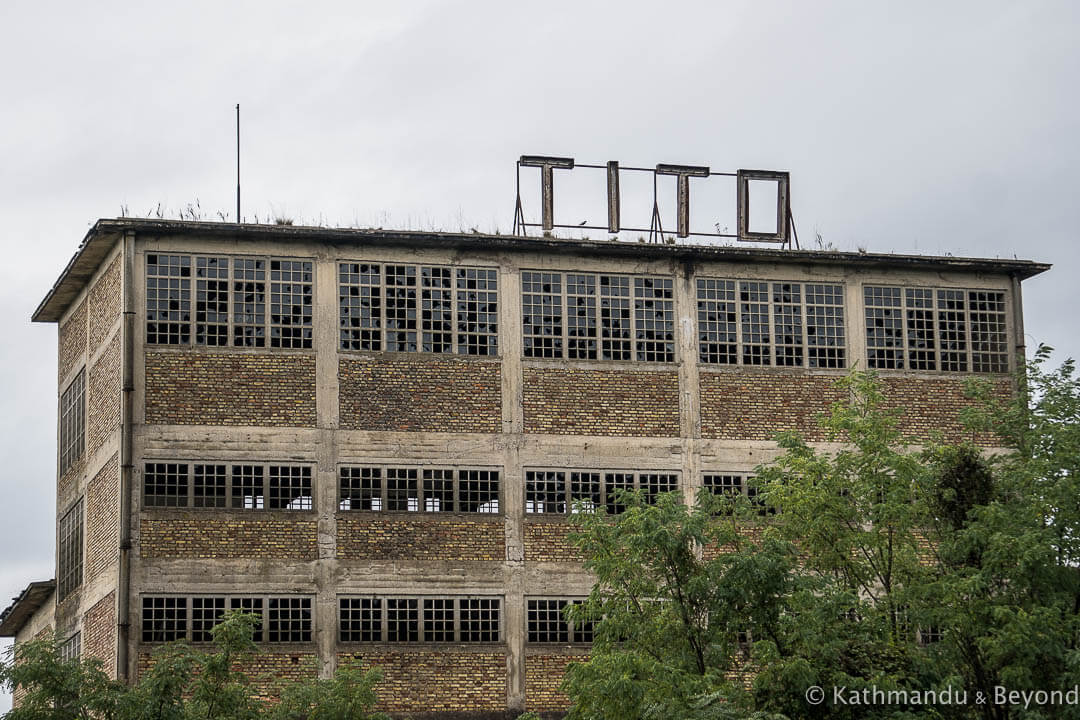
There was lots of foliage in front of the mine and the ground was pretty sodden because of the recent rain but we identified a sort of path that led to what used to be the building’s main entrance. The biggest hurdle at this point was walking gingerly along a rather slim beam of concrete that was surrounded by stagnant water on either side of it. Once inside, a bare concrete staircase continued to the upper levels of the structure.
We were alone inside the mine, although all the while we could hear the rumble of lorries passing on the road outside. We stopped on various levels to take a look around but the only thing we saw was lots and lots of raw concrete. Our goal was the rooftop as we wanted to get a closer look at the ‘Tito’ sign but once we had reached the top level, we hit a dead end and that was the end of that. A few shots of the exterior and a selfie of us for posterity (see below) and we were on our way …
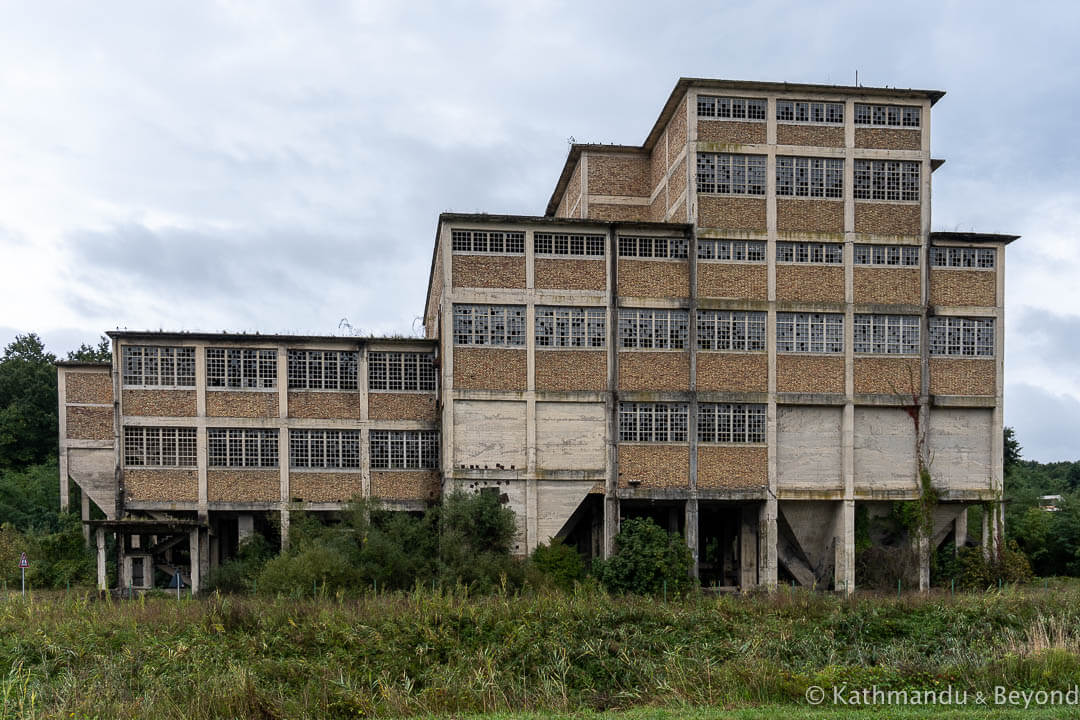
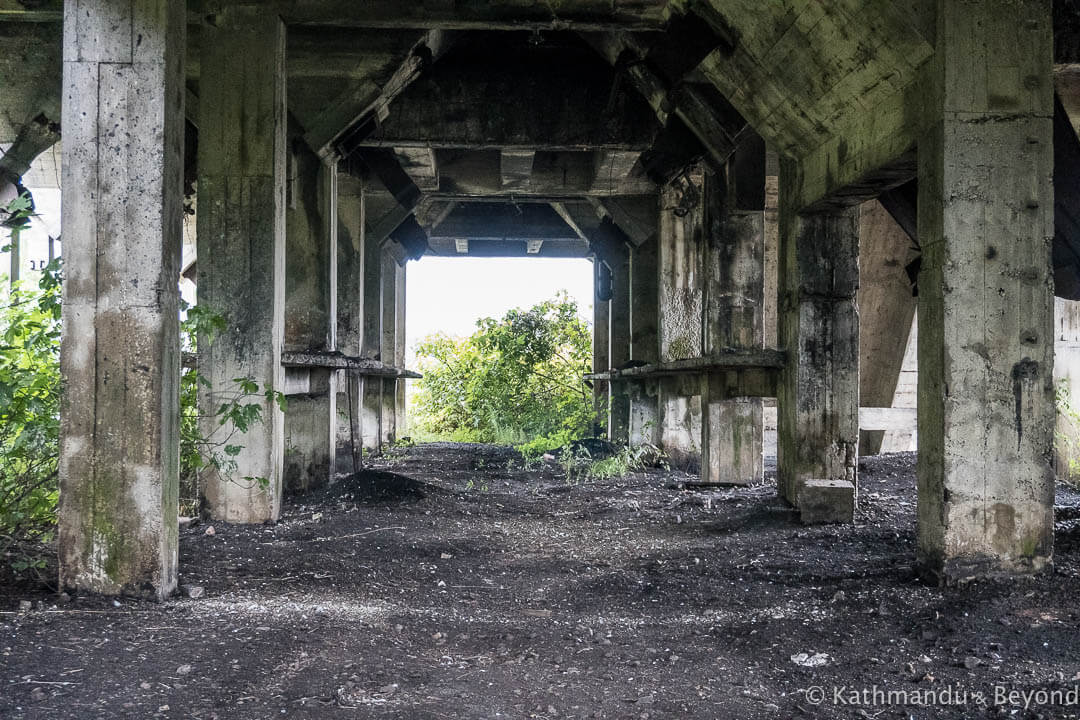
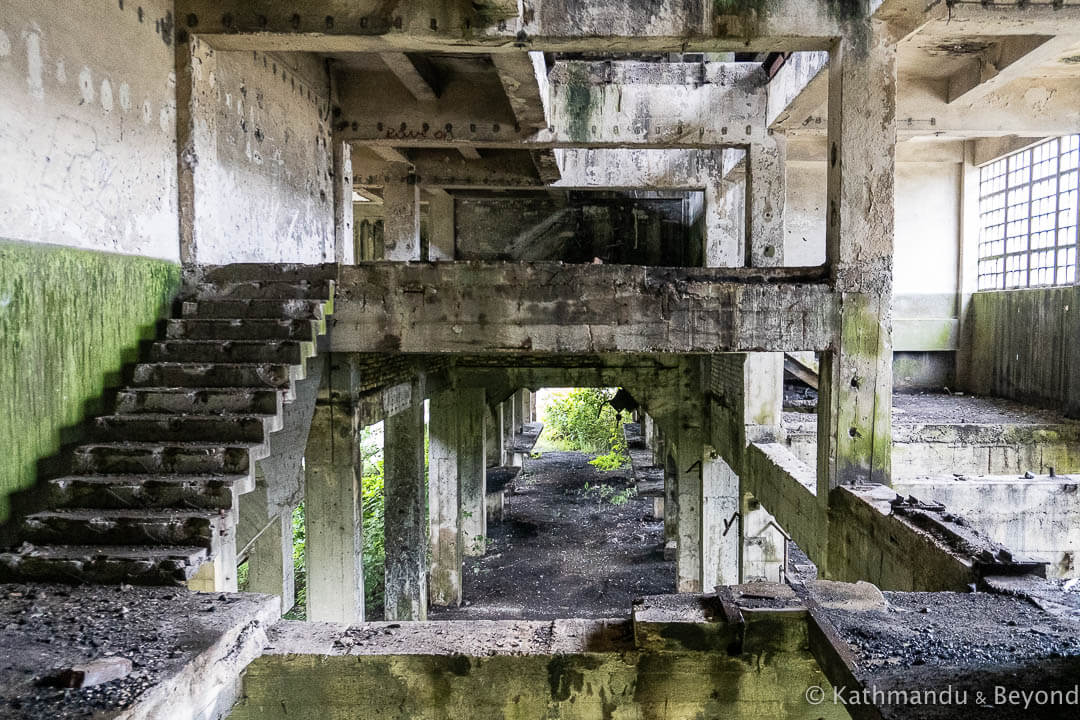
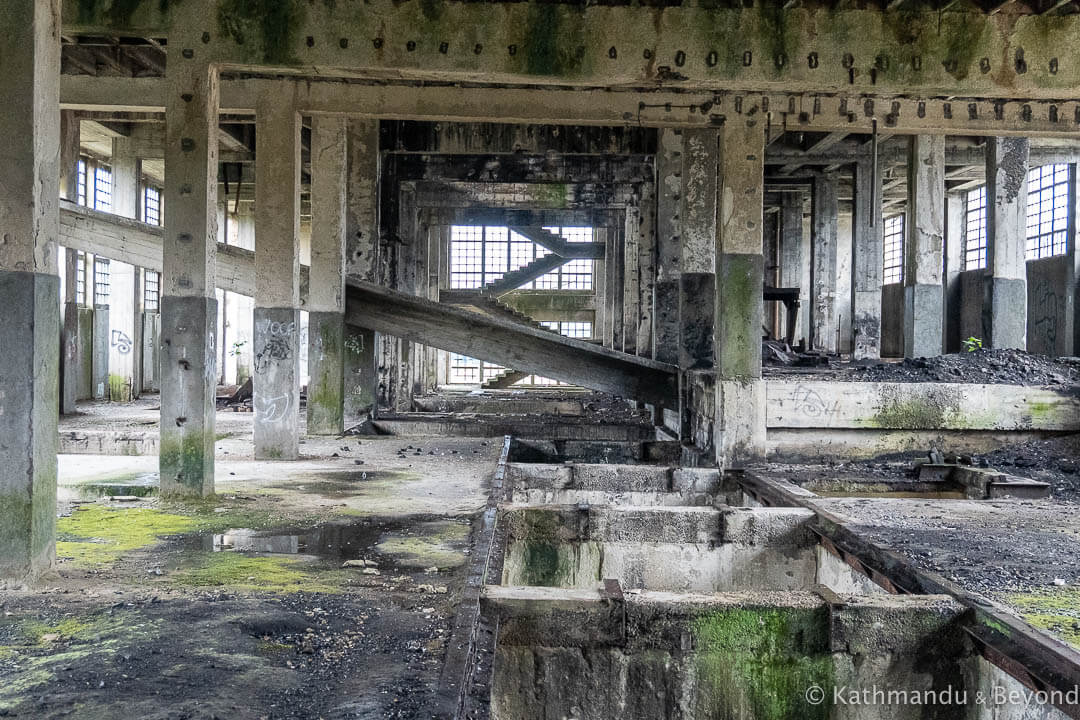
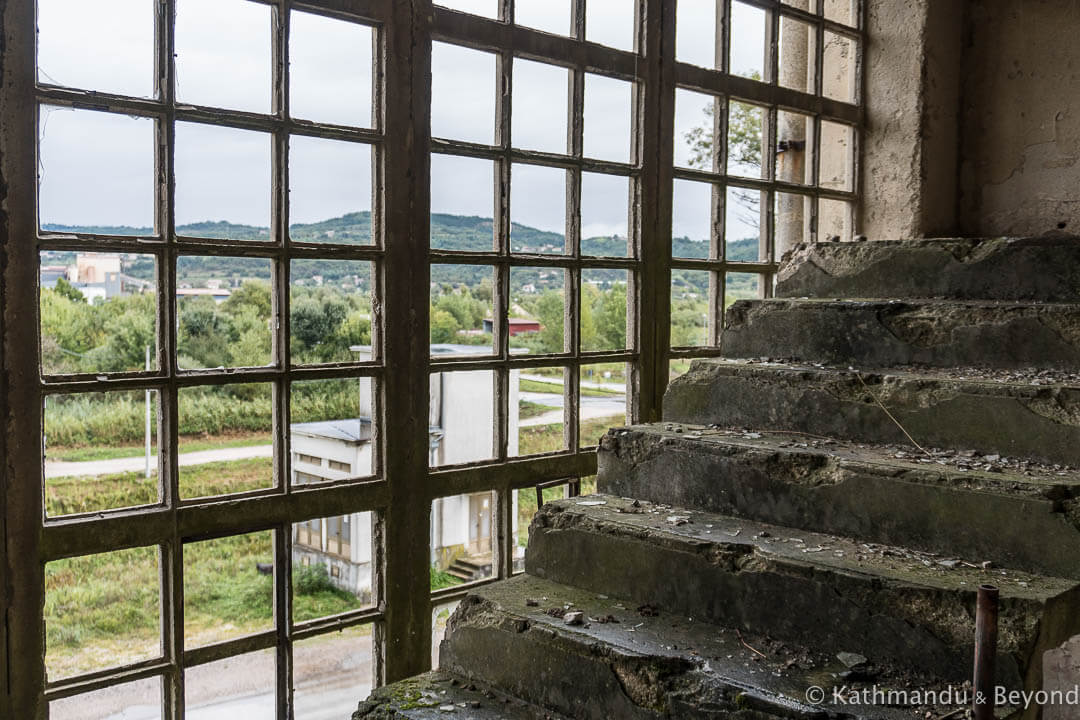
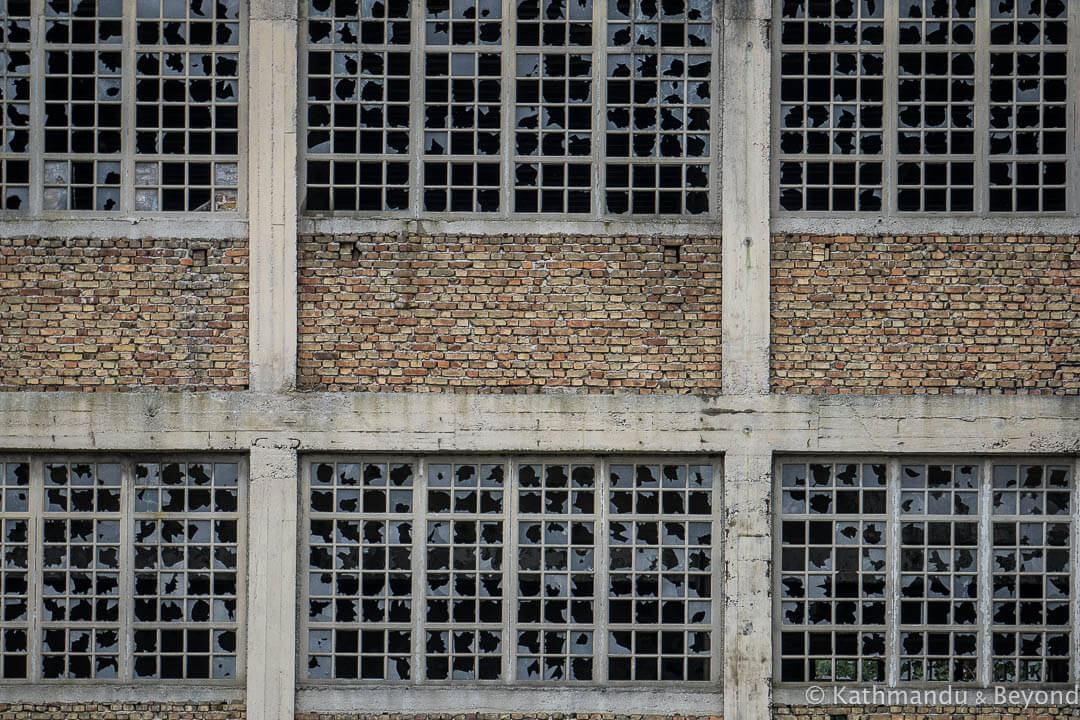
What of the connection between the large monument in Labin and the old separation mine in Potpićan?
As well as having a delightful old quarter, Labin used to be the centre of Croatia’s biggest coal mining district. The stark sculpture mentioned above, which was erected in 1983, is called the Monument to the Miner Fighters. In March and April 1921, there was a miners’ strike in Labin that quickly became an anti-fascist rebellion. In fact, it went further than that in so much that, for a short while Labin became the self-governing Republic of Albona (*).
(*) After the collapse of the Austro-Hungarian Empire at the end of World War I, Istria was partitioned to Italy in 1920 and remained so until 1947. As a consequence of this, many Istrian towns and cities have old Italian names. Albona was the Italian name for Labin.
The republic only lasted just over a month (2nd March – 8th April 1921) and was eventually suppressed by the Italian administration in Istria at the behest of the mine owners themselves. The insurrection is considered to be the world’s first anti-fascist uprising and a number of miners died during the rebellion. The monument, which represents four pistons and an unfinished mining tunnel, honours those who fell during that time.
Labin’s main mine closed in 1989 but it is fair to assume that the separation mine in Potpićan, which is only a short distance away remember, was part and parcel of the region’s coal mining industry. I’m also going to surmise that Potpićan’s separation mine remained operational until the late 1980s and has been non-functional since that time.
As an aside, I mostly wanted to record this particular day because it was part of our 20th wedding anniversary celebrations. I’d planned it so that we would have a pleasant stroll around Labin’s old town, a nice lunch in a decent restaurant and then a spot of urbexing to round off the day. The crappy weather put paid to two-thirds of that plan but at least we got to rummage around an abandoned building for an hour or so as well as see the biggest (only!) ’Tito’ sign we are ever likely to see …
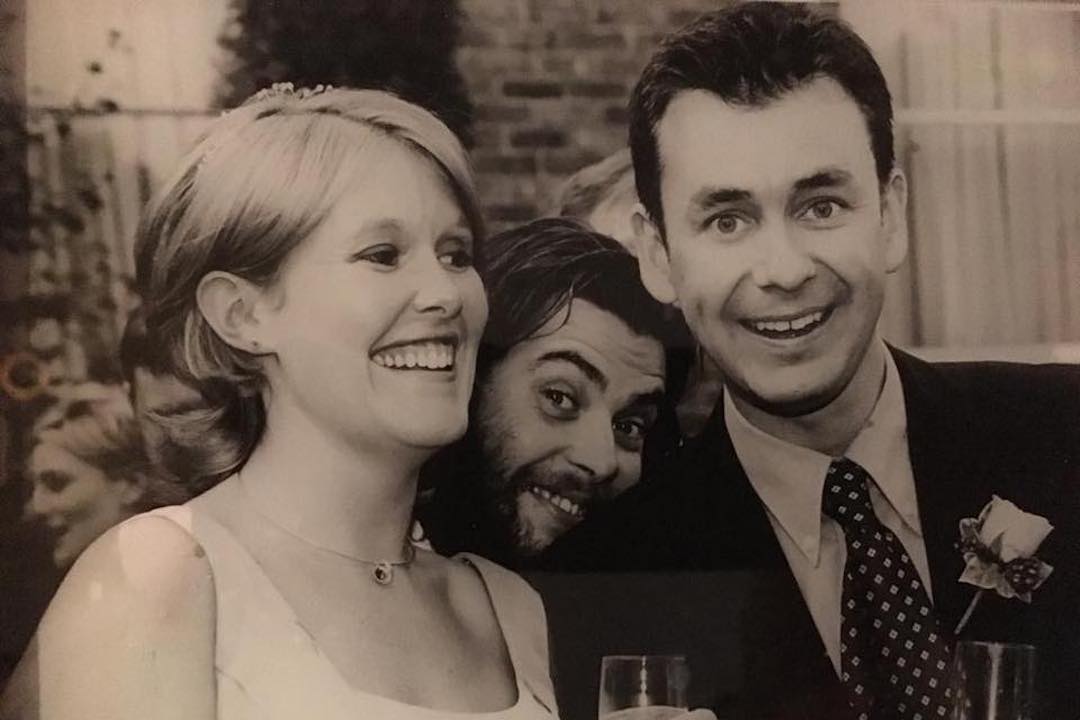
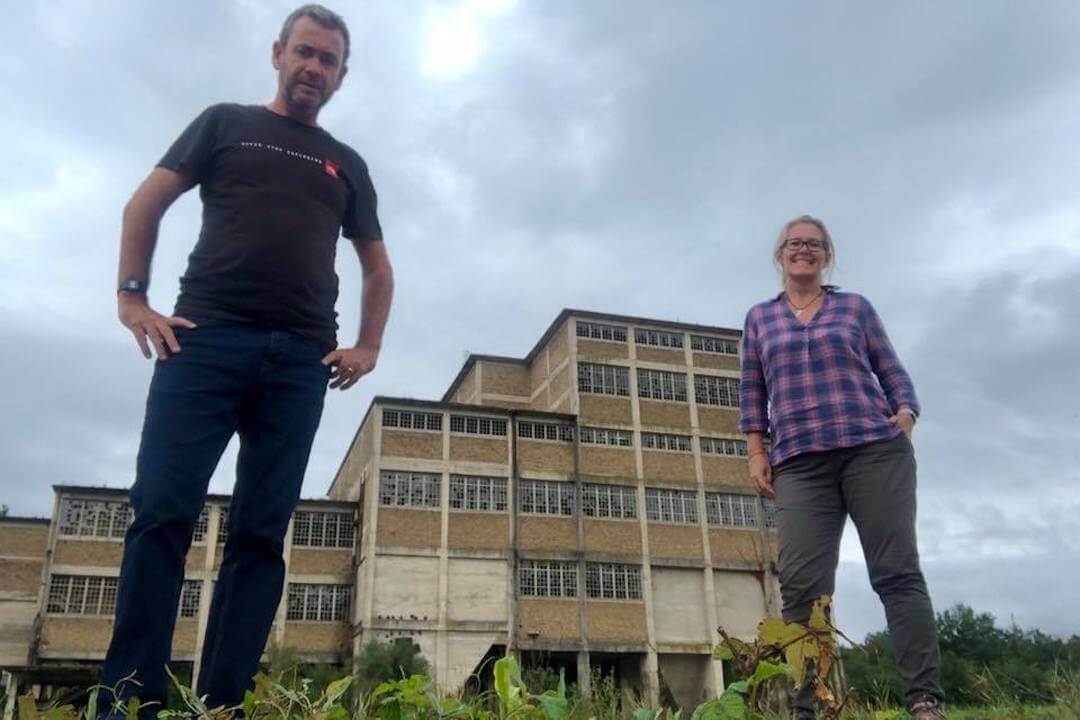
So not a complete disaster and, what’s more, we were able to celebrate the occasion properly the following day. That night we made it to Opatija, a once-popular Austro-Hungarian resort town on Istria’s northeast coast. Yet again, the rain had been relentless for the entire 50km journey and walking anywhere that evening on the hunt for a decent restaurant was a non-starter. (I had no intention of getting back in the car and besides, I wanted a drink!). But, the next day, the rain had stopped and the sun was shining and after a morning stroll around, what Lonely Planet describes as a ‘genteel resort popular with German and Austrian seniors’ (just our cup of tea!), we found a pleasant restaurant with a view of the harbour, took off our sightseeing-hats and settled in for the rest of the day!
READ MORE BLOG POSTS FEATURING ABANDONED PLACES
READ MORE CROATIA BLOG POSTS
IF YOU ENJOY EXPLORING ABANDONED MINES, PLEASE SHARE OUR POST ABOUT POTPICAN SEPARATION MINE




Trackbacks/Pingbacks